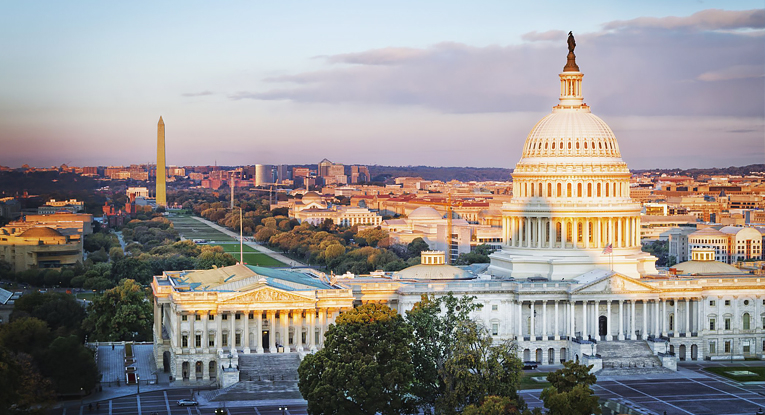Fifth Circuit Issues Order Reaffirming Stay of ETS – What’s Next?
The federal Occupational Safety and Health Administration (OSHA) announced on Nov. 4, 2021, that it was implementing a long-awaited emergency temporary standard (ETS) mandating large employers to either: require its employees to be vaccinated against COVID-19; or allow employees to choose between vaccination and weekly testing and mandatory masking. OSHA published the ETS in the Federal Register on Nov. 5. The same day, challengers filed suit in the Fifth Circuit Court of Appeals, as well as in other Courts of Appeals. On Nov. 6, 2021, the Fifth Circuit temporarily stayed the ETS, finding “cause to believe there are grave constitutional statutory and constitutional issues” with the mandate. Following an expedited briefing schedule, on Nov. 12, 2021, the Fifth Circuit issued a sweeping order (Order), staying enforcement and implementation of the ETS.
The Fifth Circuit’s Order was blistering. As correctly stated by the Court, to uphold the ETS, OSHA must show that the emergency regulation is “necessary” to protect employees from “grave danger” due to exposure to “substances or agents determined to be toxic or physically harmful.” This, the Court held, OSHA failed to do.
Specifically, the Court determined OSHA had failed to demonstrate that the ETS was “necessary,” given the seemingly arbitrary distinction between employers with 100 or more employees and those with fewer. The Court described the ETS as a “rare government pronouncement that is both overinclusive and underinclusive.” The Court criticized OSHA for failing to distinguish between workplaces where employees work in isolation and those where employees work “shoulder to shoulder in a cramped warehouse,” yet made no attempt to shield employees whose employers did not meet the 100-employee threshold.
The Court also challenged OSHA’s designation of COVID-19 as an “emergency,” given “that the entire globe has endured [COVID-19] for nearly two years.” The Court also challenged OSHA’s designation of COVID-19 as a “grave danger” within the scope of its authority because the virus is not particular to any workplace, and because the virus is not life threatening to most employees. The Court also questioned whether exposure to an airborne virus was the same as exposure to “substances or agents determined to be toxic or physically harmful;” if not, the ETS exceeded the scope of OSHA’s regulatory authority.
Finally, the Court challenged whether OSHA has the constitutional authority to issue the ETS in the first instance, under the Commerce Clause and principles of separation of powers. As stated by the concurring opinion, courts “expect Congress to speak clearly when authorizing an agency to exercise powers of ‘vast economic and political significance.’” Given the scope of the ETS, which is estimated to reach nearly two-thirds of all private-sector employees, as well as its breadth, the concurring opinion finds this is a matter for Congress, not OSHA – and casts doubt on whether Congress even has this power.
What’s next?
Challenges have been filed in 11 of the 12 Circuit Courts of Appeals, with some seeking to permanently stay the ETS and others seeking to uphold it. In accordance with applicable rules, all pending challenges will be consolidated into one, in the court chosen by a lottery to be held on or about Nov. 16, 2021. The fate of the ETS will depend on the ruling of that court and, likely, the Supreme Court. Final resolution of the appeal will likely take a few months, but there are no specific deadlines for any court to rule upon the case. In the meantime, OSHA is barred from enforcing and taking further steps to implement the ETS. OSHA’s website acknowledges the Order and states that OSHA “has suspended activities related to implementation and enforcement of the ETS pending future developments in the litigation.” This ruling does not impact the Centers for Medicare & Medicaid Services’ interim final rule for health care workers and President Biden’s Executive Order 14042 on mandatory vaccinations for federal contractors, both of which have been separately challenged, but not enjoined. Employers should continue to adhere to these requirements as applicable.
Whether the ETS ultimately will go into effect is not known. As originally published, the ETS gave employers until Dec. 6, 2021, to implement all requirements except for establishment and implementation of a testing program for employees who do not get vaccinated. The ETS gave employers until Jan. 4, 2022, to establish and implement the testing program. Additionally, when OSHA implements a significant new regulation, it typically grants an informal grace period for employers who are diligently attempting to comply, but may not have achieved full compliance by the compliance deadline. The ETS was stayed before OSHA had an opportunity to state whether such a grace period would be added to the compliance deadlines. If the ETS is ultimately upheld in whole or in part by a court, either the court or OSHA will almost certainly clarify the compliance deadlines. It is expected that OSHA will, in effect, “restart the clock” and give employers about the same amount of time for compliance as was granted to them in the ETS. This, however, is not guaranteed. In the event the ETS survives, however, given the time it will take for implementation, it may be sensible to begin efforts to comply with the more time-consuming elements of the ETS, such as determining the vaccination status of employees and developing a written program, to include procedures for evaluating medical and religious accommodation requests, so that employers are not rushed if the ETS is upheld by the courts. Some employers will likely choose to proceed with full implementation even during the stay, which may also be an appropriate approach. Other employees will not take any action until the courts decide the fate of the ETS, and they can certainly do that. As mentioned above, OSHA has suspended all activities related to implementation of the ETS.
Armstrong Teasdale lawyers will continue to monitor for and issue updates related to the ETS. Should you have any questions specific to your organization and potential implications in the meantime, please contact your regular Armstrong Teasdale attorney or one of our authors listed below.









































